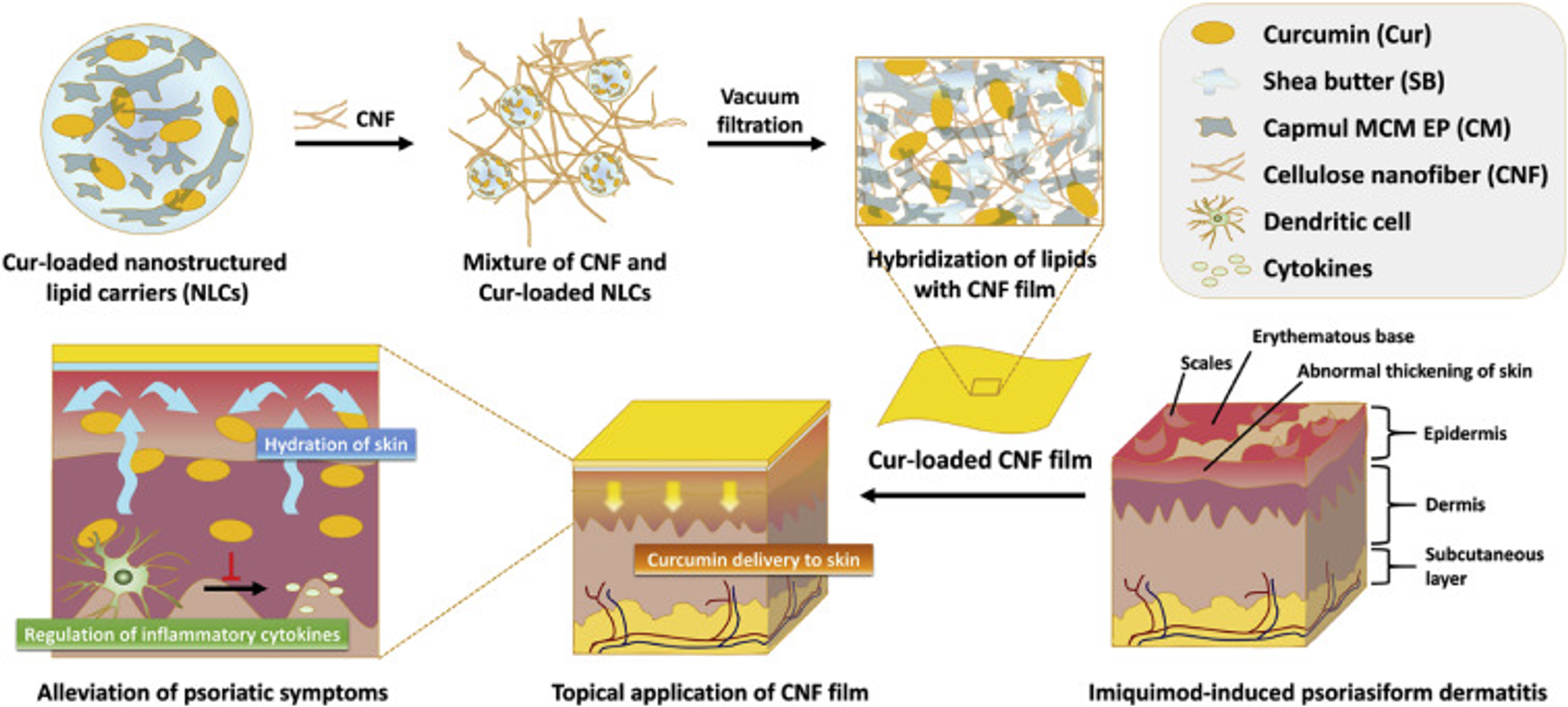Biomaterials (2018), corresponding-author, 15.304
Abstract
Cellulose nanofiber (CNF) is an attractive biomaterial given its film-forming properties, excellent mechanical properties and biocompatibility. Herein, CNF film was prepared as a topical drug delivery system by hybridizing curcumin (Cur)-loaded nanostructured lipid carriers (NLCs). NLCs with a mean diameter of ≈500 nm were fabricated by using a solvent diffusion method. The lipid composition of the NLCs was optimized based on the efficiency of Cur delivery to the artificial skin and mechanical strength of the developed films, where a composition containing shea butter and Capmul MCM EP exhibited the highest values of 233.2 ± 96.6 μg/cm2 /mg and 4.86 ± 0.14 MPa, respectively. The Cur-loaded lipid-hybridized CNF (lipid@CNF) films with a smooth rather than particle-embedded surface were obtained by vacuum filtration of the NLCs and CNF mixture, which were confirmed by TEM, SEM, AFM, XPS, and FTIR analyses. The Cur-loaded lipid@CNF films exhibited more than 2.0-fold increases in Cur deposition to the epidermis of imiquimod (IMQ)-induced psoriatic mouse compared with the films without lipids, which potentially resulted from the amorphous state of Cur observed in the DSC and PXRD analyses and the permeation-enhancing effect of lipids. The in vivo anti-psoriatic efficacy test revealed that the Cur-loaded lipid@CNF films ameliorated the psoriatic skin symptoms in IMQ-induced mice, reducing the pro-inflammatory cytokine levels in the skin almost comparable to a commercially available topical corticosteroid cream. These results could be attributed to the enhanced Cur deposition along with the skin hydration effect of the films. These findings suggest that the developed CNF films can be used as a promising topical drug delivery system for psoriasis therapy.
Schematic illustration of the Cur-loaded lipid-hybridized CNF film for the treatment of IMQ-induced psoriasiform dermatitis
.png&blockId=484d951f-4a74-4ba5-ac0c-97a71142f0d7)
